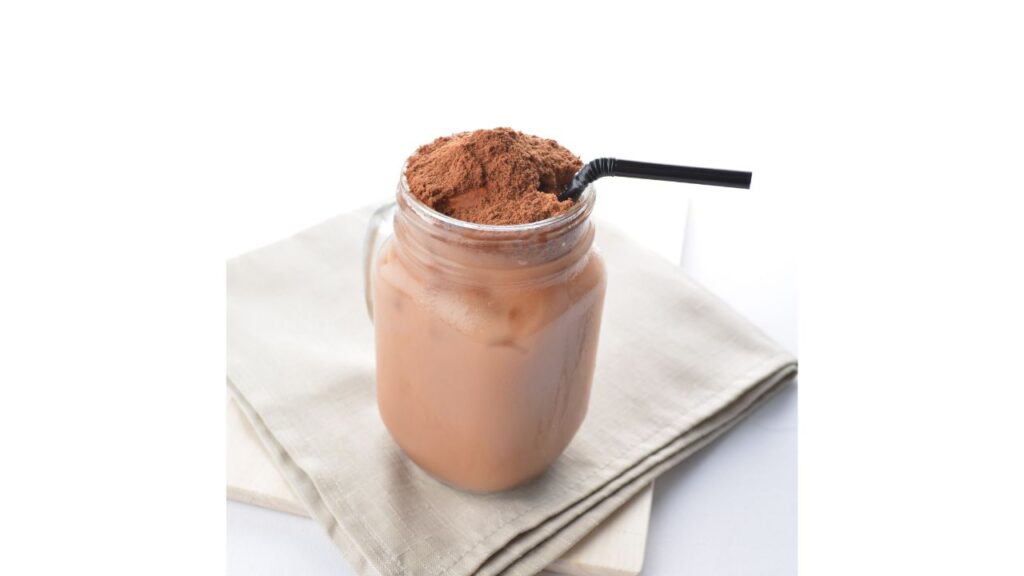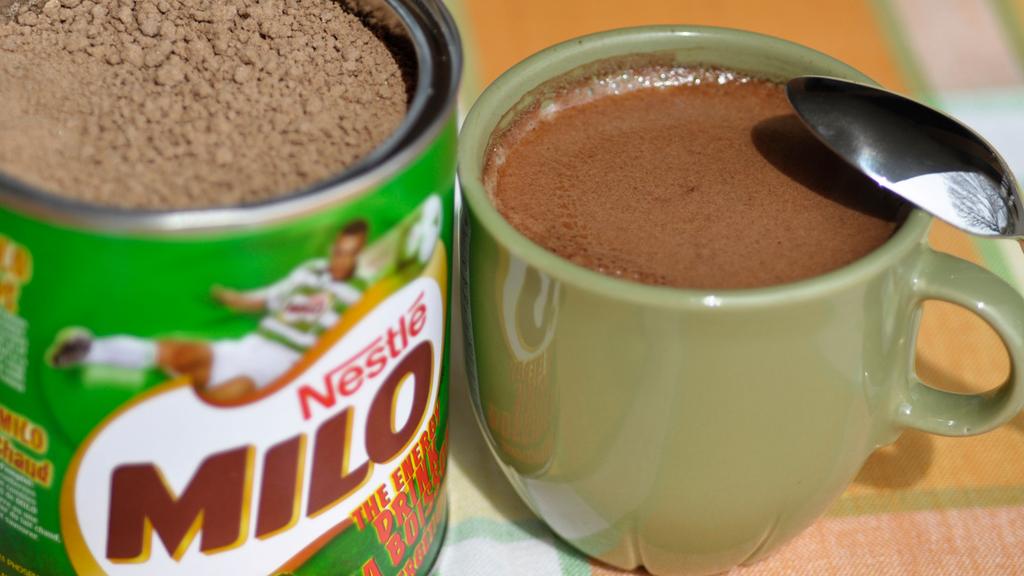A beloved beverage in Singapore, Milo’s success has been nothing short of phenomenal. It is now sold in over 50 countries, with an estimated 34 million cups of Milo powder and 3.7 million ready-to-drink servings consumed every day.
Milo’s marketing has consistently reinforced its image as a source of “nourishing energy,” fortified with essential vitamins and minerals. This association with health and strength that defined its success has created a “health halo,” a powerful perception of overall wellness that can obscure less favorable attributes on the nutrition label.
But does the science support Milo’s healthy reputation? Let’s investigate its ingredients, nutritional profile, and the evidence behind its health claims.
1. What’s Really Inside Milo?
At its core, Milo is built on four primary ingredients:
- Malted barley
- Milk powder
- Sugar
- Cocoa
The malted barley provides the distinctive flavor and complex carbohydrates marketed as a source of “nourishing energy”. Milk powder contributes protein, calcium, and a creamy texture, while sugar is a key component for taste, and cocoa provides the chocolate flavor along with theobromine, a mild, naturally occurring stimulant.
However, a closer look at the ingredients list reveals that “Milo” is not a single, globally standardized product. Its formulation varies significantly from one region to another, a reflection of differing local palates, raw material availability, and regulatory landscapes. This means that nutritional data and health impacts cannot be universally extrapolated. The Milo consumed in one country may be fundamentally different from that in another.
- The Australian formulation lists an “EXTRACT OF MALT BARLEY OR MALT BARLEY AND RICE” and “MILK SOLIDS”.
- The United States (U.S.) version contains “MALTED BARLEY AND TAPIOCA STARCH EXTRACT,” “NONFAT MILK,” and notably, “PALM OIL,” an ingredient not listed in the Australian version. Another U.S. variant includes a more complex dairy base with “MILKFAT” and “WHEY”.
- In Asia, marketing highlights a proprietary “Protomalt®” made from barley in Malaysia , while the Filipino version uses a blend of barley and cassava.
Beyond these core components, the fine print includes additives that classify Milo as an ultra-processed food.
Many formulations contain maltodextrin, a processed starch used as a filler that has a high glycemic index. The presence of emulsifiers like soy lecithin and “ARTIFICIAL FLAVOR” in some versions further cements its status as a highly engineered food product.
These variations underscore that any assessment of Milo’s healthfulness must be made on a region-by-region basis.
2. A Tale of Two Preparations
To understand Milo’s nutritional impact, it must be analyzed from two distinct perspectives: the powder in its concentrated form and the final beverage as prepared by the consumer.
Viewing the powder in isolation reveals its fundamental nature. Per 100 grams, Milo powder contains approximately 74 grams of carbohydrates, of which a staggering 48 grams are sugars. The New Zealand version is noted as being 46% sugar by weight. From this perspective, Milo is undeniably a high-sugar product.
However, Nestlé consistently argues that judging the powder alone is “inappropriate” and that the product should be assessed “as consumed”. This is a deliberate and effective strategy. By promoting preparation with milk, the company leverages the nutritional virtues of dairy to create a more favorable profile for the final beverage.
This approach effectively dilutes the powder’s high sugar concentration while borrowing milk’s “health halo.”
The impact of this strategy is clear when examining the Australian formulation :
- A 20g serving of Milo powder alone contains 80 calories and 8.8g of sugar.
- When mixed with 200ml of skim milk, the final beverage contains 150 calories and a total of 19.8g of sugar.
In this scenario, the milk itself contributes a significant amount of nutrients, including about 11g of natural sugar (lactose), 7.5g of protein, and a substantial amount of calcium. This allows the prepared drink to boast impressive contributions to the Recommended Dietary Intake (RDI), such as 50% of calcium, 34% of iron, and 50% of vitamin B12.
The nutritional focus is strategically shifted away from the high-sugar powder and onto the more balanced, fortified final drink.
The consumer’s choice of milk further alters the outcome; using reduced-fat milk instead of skim milk increases the calories to 180 and more than doubles the fat content to 4.5g, while the added sugar from the Milo powder remains constant.

3. Milo’s Sugar Content
The central health concern surrounding Milo is its sugar content. A single serving of the U.S. version contains 9 to 11 grams of added sugars, contributing 18-22% of the FDA’s recommended Daily Value.
The Australian version is lower, with 6.3g of added sugar per serving. While a prepared cup can contain nearly 20g of total sugar, the company often highlights that over half of this comes naturally from the lactose in milk. While technically true, this framing can minimize the impact of the free, added sugars from the powder itself.
When benchmarked against global health guidelines, the numbers are stark. The World Health Organization (WHO) recommends that children aged 4-6 consume no more than 19g of free sugars per day, and those aged 7-10 no more than 24g.
For adults, the maximum is 50g, with an ideal target of less than 25g. A single serving of some Milo versions can exhaust a significant portion of a child’s daily limit before they have eaten anything else.
4. Evaluating the Health Claims: Marketing vs. Reality
Milo’s primary marketing platform is built on the promise of “energy”. While the drink does provide calories, the scientific definition of energy, the source is predominantly sugar.
The claim that vitamins B “help release energy from food” is scientifically accurate, as these vitamins are essential for metabolism. However, this is a common marketing tactic used for energy drinks and fortified cereals. Adding vitamins to a sugary product does not negate the health implications of the sugar itself.
Milo has faced scrutiny globally.
- The gap between marketing and reality was starkly illustrated in a 2025 controversy in Vietnam. Nestlé advertised Milo with the claim it was “proven to help children”. Following an inspection, health officials in Dong Nai province found this claim to be “misleading” and lacking sufficient evidence, referring the case to police for investigation over “signs of consumer deception”.
- In Australia, a formal complaint was lodged with advertising standards, arguing that Milo is a high-sugar “treat” and should not be promoted as a “health product”.
- A 2017 New York Times article raised questions about scientific impartiality, reporting that Nestlé had been financing a nutrition society and vetting its articles prior to publication.
This pattern of scrutiny indicates a persistent disconnect between the product’s marketing as a wholesome, energizing drink and its nutritional reality as a high-sugar, ultra-processed food.
5. The Final Verdict: So Is Milo Healthy?
A simple “yes” or “no” fails to capture the complexity of Milo. Based on the comprehensive evidence, the healthfulness of this global favorite is highly conditional and depends on four key factors: preparation, portion, frequency, and context.
Preparation: The powder alone is a high-sugar concentrate. Its nutritional profile is significantly improved when mixed with milk, which adds protein and calcium. However, this preparation does not erase the added sugar load from the powder.
Portion Size: Adhering strictly to the recommended serving size (typically 2-3 teaspoons) is critical. Common practices like heaping spoonfuls can easily double or triple the sugar and calorie intake, turning a modest treat into a significant sugar bomb.
Frequency: Consumed occasionally, Milo can fit into an otherwise healthy and balanced diet. Consumed daily under the guise of a “health drink,” it can become a major contributor to excessive sugar intake, a particular concern for children whose daily limits are much lower than adults’.
Context of Overall Diet: For a highly active child or athlete with a nutrient-dense, low-sugar diet, an occasional Milo is unlikely to be detrimental. For a sedentary individual whose diet is already high in processed foods and sugar, it simply adds to the existing nutritional burden.
Based on this analysis, Milo should not be categorized as a “health drink.” A more accurate classification would be a “fortified confectionery beverage” or, as its own label sometimes states, a “formulated supplementary food”. The fortification with vitamins and minerals is a tangible benefit, but it is delivered in a high-sugar vehicle.
6. Conclusion
For fans of Milo, the following recommendations can help place Milo in a healthier context:
- Read the Label: Focus on the “added sugars” line on the nutrition panel, not just the total sugar content, to understand the true sugar load.
- Treat it Like a Treat: Position Milo as an occasional indulgence, similar to hot chocolate or a dessert, rather than a daily health-promoting staple.
- Control the Portion: Use a standard measuring spoon to avoid “portion distortion” and unintended sugar overload.
- Prioritize Plain Milk: For daily nutrition, especially for children, plain milk remains the superior choice for protein and calcium without the added sugar.







